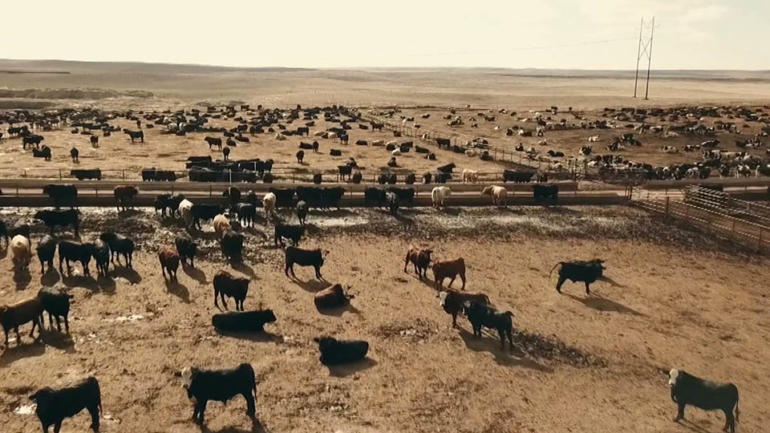It’s been more than two years since China lifted what had been a 13-year ban on U.S. beef imports — but China remains a relatively small market for U.S. cattle producers. One challenge is China’s strict regulations on what kind of beef can come into the country. U.S. researchers are now working on ways to educate American cattle ranchers on how to get the rules right.
CGTN’s Hendrik Sybrandy explains.
Steve Gabel owns Magnum Feedyard, a large cattle operation in Wiggins, Colorado.
“We feed about 23,000 cattle two times every day,” Gabel said recently.
The animals are raised here until they’re ready for slaughter and sent off to a packing plant. They come from all over the U.S.
“Wisconsin to New Mexico and from Alabama to Oregon,” Gabel said.
Today, U.S. beef is exported predominantly to countries like Japan, Korea and Mexico. Two years after lifting its ban on U.S. beef imports, China is not a big buyer but the market has potential.
“We as a cattle feeding industry think there’s a huge opportunity in China,” Gabel said.
A key to boosting beef sales there may be found in U.S. laboratories where researchers are poring over a list of growth-promoting or other compounds that China does not allow in its beef products.
“Their list is 136 compounds,” said Keith Belk, Professor of Animal Sciences at Colorado State University. C.S.U., together with Texas A&M University, were awarded $750,000 by the U.S. Department of Agriculture to develop rules of the road for beef producers who want to sell to China.
“I think most producers don’t have a clue about how they have to go about raising cattle to hit that market right now,” Belk said.
For example, the feed additive ractopamine, which promotes leaner beef, is allowed in the U.S. but not in China. A trickier case: the rarely used zeranol, a growth agent also on the banned list, can also show up naturally as mold that forms on crops.
“And when you feed those crops to the cattle, they’ll end up testing positive for zeranol even though they were never provided the growth hormone,” Belk said. “It’s issues like that we’re sort of having to feel our way with.”
Producers like Gabel argue the banned compounds they rely on were developed using sound science and enable them to get a bigger return on the beef they sell. They said raising cattle to more organic standards would be much costlier. Chinese consumers who’ve yet to develop a taste for U.S. grain-fed beef and tariffs on U.S. beef sent to China also make that market less attractive.
“It’s not cost-effective today,” Gabel said. “We just have to know what the playing field looks like and then we can determine whether it makes economic sense for us to compete in that marketplace.”
Belk said the goal of his program is to teach producers best practices.
“We’ll be able to say you can or can’t use this compound or if you can use it, here’s how you have to use it to meet the Chinese requirements,” Belk said.
He hopes to ramp up training for feed yard owners like Gabel sometime next year.
 CGTN America
CGTN America

